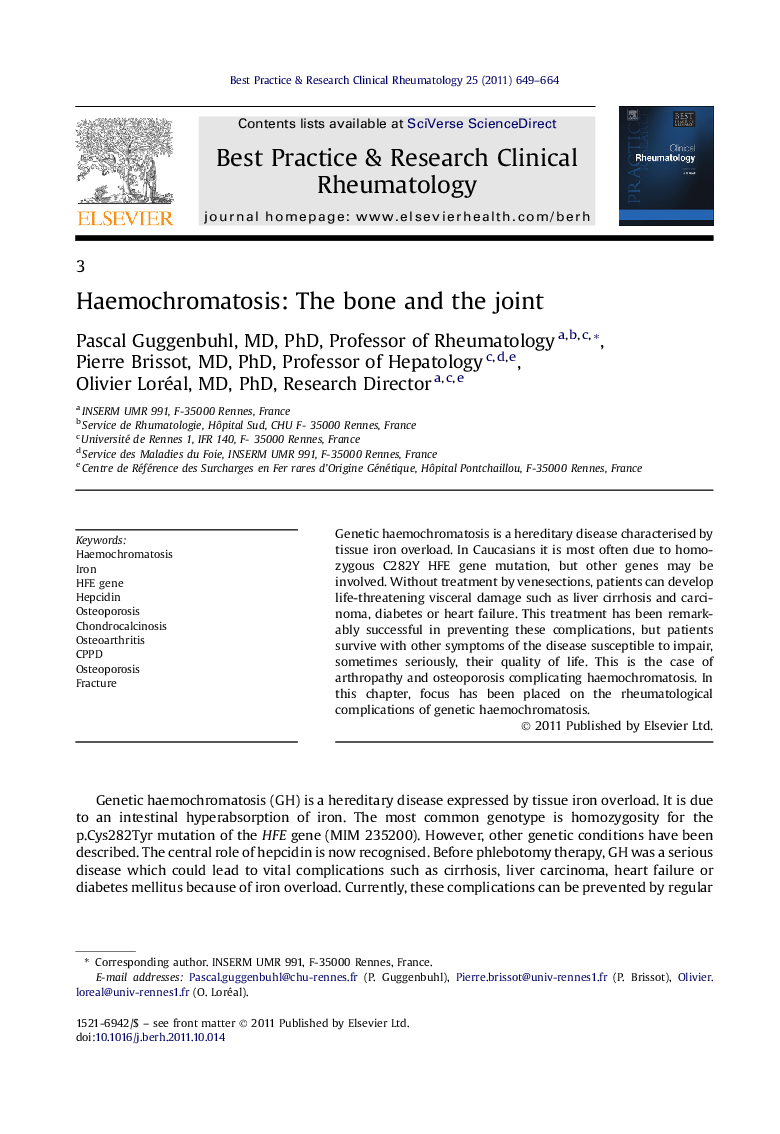| Article ID | Journal | Published Year | Pages | File Type |
|---|---|---|---|---|
| 3343193 | Best Practice & Research Clinical Rheumatology | 2011 | 16 Pages |
Abstract
Genetic haemochromatosis is a hereditary disease characterised by tissue iron overload. In Caucasians it is most often due to homozygous C282Y HFE gene mutation, but other genes may be involved. Without treatment by venesections, patients can develop life-threatening visceral damage such as liver cirrhosis and carcinoma, diabetes or heart failure. This treatment has been remarkably successful in preventing these complications, but patients survive with other symptoms of the disease susceptible to impair, sometimes seriously, their quality of life. This is the case of arthropathy and osteoporosis complicating haemochromatosis. In this chapter, focus has been placed on the rheumatological complications of genetic haemochromatosis.
Keywords
Related Topics
Health Sciences
Medicine and Dentistry
Immunology, Allergology and Rheumatology
Authors
Pascal Guggenbuhl, Pierre Brissot, Olivier Loréal,
